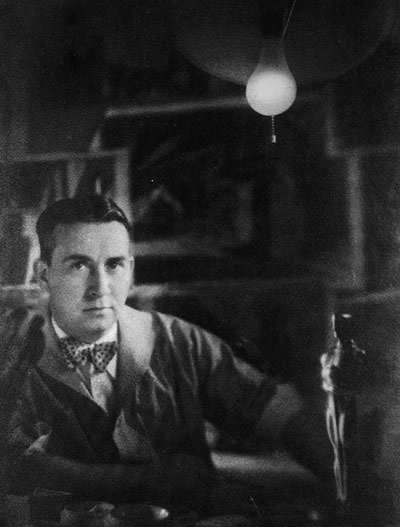William Cameron Menzies (William Cameron Menzies)

William Cameron Menzies was born in New Haven, Connecticut to Scots immigrant parents, Charles A. and Helen originally from Aberfeldy, Scotland. He studied at Yale and the University of Edinburgh, and after serving in the US Army during World War I he attended the Art Students League of New York. Menzies joined Famous Players-Lasky, later to evolve into Paramount Pictures, working in special effects and design. He quickly established himself in Hollywood with his elaborate settings for The Thief of Bagdad (1924), The Bat (1926), The Dove (1927), Sadie Thompson (1928), and Tempest (1928). In 1929, Menzies formed a partnership with producer Joseph M. Schenck to create a series of early sound short films visualizing great works of music, including a 10-minute version of Dukas’s The Sorcerer’s Apprentice, and created the production design and special effects for Schenck’s feature film The Lottery Bride (1930). Menzies’s work on The Adventures of Tom Sawyer (1938) was what prompted David O. Selznick to hire him for Gone with the Wind (1939). Selznick’s faith in Menzies was so great that he sent a memorandum to everyone at Selznick International Pictures who was involved in the production reminding them that “Menzies is the final word” on everything related to Technicolor, scenic design, set decoration, and the overall look of the production. Menzies was the director of the burning of Atlanta sequence. Menzies also (re)shot the famous Dalí dream sequence of Alfred Hitchcock’s Spellbound (1945). The term and credit “production designer,” which is sometimes used interchangeably with the term and credit “art director,” was coined specifically for Menzies to refer to his being the final word on the overall look of the production, and it was intended to describe his uncanny ability to translate Selznick’s ideas to drawings and paintings from which he and his fellow directors worked.
In addition, Menzies would go on to direct a string of dramas and fantasy films. He would be famous for two sci-fi films that many film fans and critics consider legendary: the 1936 film Things to Come, based on H.G. Wells’ work that predicted war, the search for peace and technical advancement, and Invaders from Mars (1953), which mirrored many fears about aliens and outside threats to humans in the 1950s. Both were considered innovative films for their time, with the latter made in color and applauded as one of the best sci-fi films for its time. Shortly after completing his work as an associate producer on Around the World in 80 Days (1956), Menzies died of cancer. He was interred in the Forest Lawn Memorial Park Cemetery in Glendale, California.
Born
- July, 29, 1896
- USA
- New Haven, Connecticut
Died
- March, 05, 1957
- USA
- Los Angeles, California
Cause of Death
- cancer
Cemetery
- Forest Lawn Memorial Park (Glendale)
- Glendale, California
- USA



